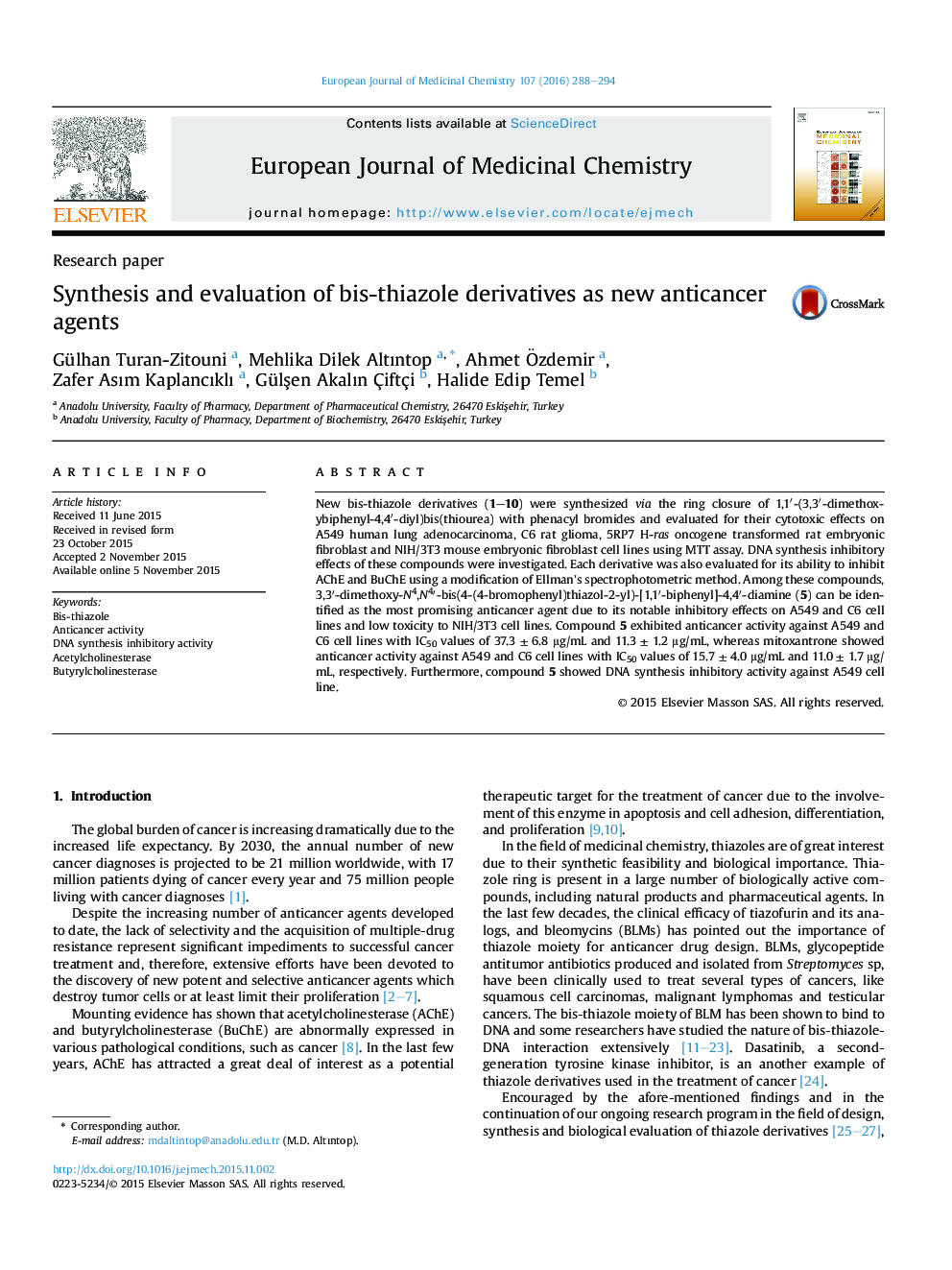| Article ID | Journal | Published Year | Pages | File Type |
|---|---|---|---|---|
| 1393930 | European Journal of Medicinal Chemistry | 2016 | 7 Pages |
•The cytotoxic effects of new bis-thiazoles on A549, C6 and 5RP7 cells were evaluated.•The compounds were evaluated for their DNA synthesis inhibitory activity.•Each derivative was evaluated for its ability to inhibit AChE and BuChE.•Compound 5 was the most promising anticancer agent against A549 and C6 cell lines.•Compound 5 showed moderate AChE inhibitory activity.
New bis-thiazole derivatives (1–10) were synthesized via the ring closure of 1,1′-(3,3′-dimethoxybiphenyl-4,4′-diyl)bis(thiourea) with phenacyl bromides and evaluated for their cytotoxic effects on A549 human lung adenocarcinoma, C6 rat glioma, 5RP7 H-ras oncogene transformed rat embryonic fibroblast and NIH/3T3 mouse embryonic fibroblast cell lines using MTT assay. DNA synthesis inhibitory effects of these compounds were investigated. Each derivative was also evaluated for its ability to inhibit AChE and BuChE using a modification of Ellman's spectrophotometric method. Among these compounds, 3,3′-dimethoxy-N4,N4′-bis(4-(4-bromophenyl)thiazol-2-yl)-[1,1′-biphenyl]-4,4′-diamine (5) can be identified as the most promising anticancer agent due to its notable inhibitory effects on A549 and C6 cell lines and low toxicity to NIH/3T3 cell lines. Compound 5 exhibited anticancer activity against A549 and C6 cell lines with IC50 values of 37.3 ± 6.8 μg/mL and 11.3 ± 1.2 μg/mL, whereas mitoxantrone showed anticancer activity against A549 and C6 cell lines with IC50 values of 15.7 ± 4.0 μg/mL and 11.0 ± 1.7 μg/mL, respectively. Furthermore, compound 5 showed DNA synthesis inhibitory activity against A549 cell line.
Graphical abstractFigure optionsDownload full-size imageDownload as PowerPoint slide
